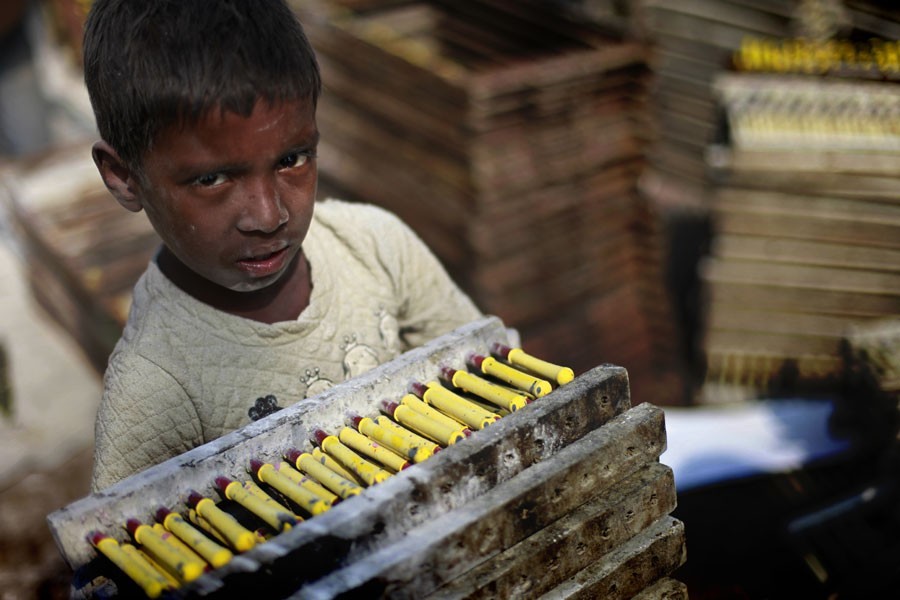Presence of lead at an alarming level in children's blood is no doubt a major health hazard for the country. That this extremely toxic substance gets into human blood, especially children's, through various sources is well known, but the dangerously high level of its presence affecting millions of children is beyond public knowledge. According to study findings revealed this week, Bangladesh is one of the most severely lead-impacted countries with more than 35.5 million babies affected. The findings were shared at a seminar titled 'Lead poisoning in Bangladesh: Research Evidence for Urgent Action', organised by the Directorate General of Health Services, the ICDDR,B and the UNICEF. Seven studies were shared at the event. A total of 980 children tested had lead in their blood and 65 per cent had lead levels above the 3.5 micrograms per decilitre, the level at which interventions is required. A rapid market screening study found lead in 96 out of 367 samples tested. The samples included locally produced toys, paints, aluminium and silver cookware, sweetener containers, vegetables, rice and a good many spices. Studies also identified multiple possible sources of lead exposure in rural Bangladesh. Isotopic analysis confirmed that adulterated turmeric is the source of high lead level in the blood of pregnant women.
A joint report by the UNICEF and the NGO Pure Earth had, sometime ago, cautioned that lead poisoning was affecting children on a massive and previously unknown scale. The report said around one in three children - up to 800 million globally - have blood lead levels at or above 5.0 micrograms per decilitre (µg/dL). Nearly half of these children live in South Asia. Bangladesh, according to the report, is the fourth most-seriously hit in the world in terms of the number of children affected. The report also found that high concentrations of lead were found in spices in Bangladesh. Lead chromate, which is used to enhance colour and weight of turmeric as a sign of quality, contributes to the excessive lead levels in children and adults alike. Recycling of used lead-acid batteries in the open-air and close to homesteads is considered to be a major source of lead exposure.
Lead exposure has severe and long-lasting health and development effects on children, including lifelong learning disabilities and their capacity to earn a living when they grow up. Lead is a potent neurotoxin which causes irreparable harm to children's brains. It is particularly damaging for babies and children under five years as it damages their brains before they have the opportunity to fully develop, causing them lifelong neurological, cognitive and physical impairment.
Experts are of the opinion that lead can be recycled safely without exposing workers, their children, and surrounding neighbourhoods. However, as the UNICEF has suggested, to start with, governments can address lead pollution using a coordinated and concerted approach. These include-developing monitoring system for blood lead level testing, preventing children's exposure to products that contain lead, public awareness campaign, framing legislation for enforcing environmental, health and safety standards for manufacturing and recycling products that are known to cause lead exposure.


